| Author | Message | ||
| peter river (Brightstone)
Registered Member Username: Brightstone Post Number: 6 Registered: 8-2009 Posted From: 204.62.64.30 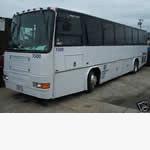 Rating: N/A |
cleaner engine, cheaper fuel, cheaper bus because nobody wants them. | ||
| Peter E (Sdibaja)
Registered Member Username: Sdibaja Post Number: 312 Registered: 5-2002 Posted From: 201.171.247.150  Rating: N/A |
where do you fuel up? | ||
| peter river (Brightstone)
Registered Member Username: Brightstone Post Number: 8 Registered: 8-2009 Posted From: 204.62.64.30  Rating: N/A |
at any cng station, utah happens to have cng for less than $1 /gal diesel equivalent. or at home, if you have the compressor. | ||
| Peter E (Sdibaja)
Registered Member Username: Sdibaja Post Number: 313 Registered: 5-2002 Posted From: 201.171.247.150  Rating: N/A |
so, out on the highway I would have no big problem getting fuel? I only remember seeing CNG fuel at city corp yards | ||
| peter river (Brightstone)
Registered Member Username: Brightstone Post Number: 9 Registered: 8-2009 Posted From: 204.62.64.30  Rating: N/A |
you would have to plan your trips, because it's not available everywhere. ie, don't expect to drive 500 miles out into the wilds of Montana and not expect to get stuck. but major interstate seem to have filling station open to public every xxx miles or so. | ||
| Tim Brandt (Timb)
Registered Member Username: Timb Post Number: 417 Registered: 10-2003 Posted From: 74.244.14.221 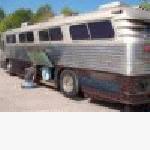 Rating: N/A |
question would be can a cng bus be converted back to diesel | ||
| marvin pack (Gomer)
Registered Member Username: Gomer Post Number: 588 Registered: 3-2007 Posted From: 71.53.155.14 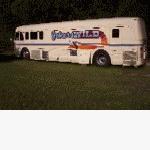 Rating: N/A |
DUHHH I may be dumb about alot of things but, what is a cng bus?? I ain't neva heerd of such a critter. Can you shoot the thing and cook up a mess for supper or what? But it don't sound like something I wanna be etin on tho?? Gomer | ||
| Wec4104 (Wec4104)
Registered Member Username: Wec4104 Post Number: 69 Registered: 7-2008 Posted From: 68.80.242.72 Rating: N/A |
If the fuel is that much cheaper (equiv to $1/ gal diesel, mile-for-mile) why wouldn't all the city public transit systems be jumping on these? What's the downside? I always figured the fuel costs per mile were what was keeping everybody from switching over. But if that is not the case, is it the initial investment? Performance/life expectancy? Safety? What? | ||
| Luvrbus (Luvrbus)
Registered Member Username: Luvrbus Post Number: 768 Registered: 8-2006 Posted From: 74.33.54.207 Rating: N/A |
The problem is they don't average 3 MPG but they are clean most transit systems are using CNG along with LNG. I read somewhere Cummins is the only manufacture left Cat,Detroit and John Deere have stopped supplying engines not sure about John Deere for certain | ||
| Buswarrior (Buswarrior)
Registered Member Username: Buswarrior Post Number: 1700 Registered: 12-2000 Posted From: 76.66.19.108 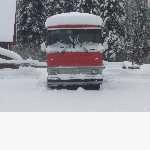 Rating: N/A |
CNG Compressed Natural Gas, was a lovely experiment that was heavily subsidized with tax dollars. You don't see private industry using it.... With the rapid ramp up of emissions regulations for the diesel engine, any claimed environment benefit of CNG has been eclipsed. And a nasty emission of natural gas through an engine is some formaldehydes... CNG engines were built for the purpose, a spark plug head bolted to a diesel block, ours here at big transit were Cummins L10 blocks. When we scrapped the experiment back a few years ago, the last of them were retrofitted with M11 diesel engines. Lean burn, in order to get some acceptable fuel mileage led to burned and sheared exhaust valves bouncing around inside the cylinders, regularly. Tanks occupied a huge footprint on the roof and were heavy. The compressor necessary to make the 3000 lbs of gas would not be inexpensive. If you treat the CNG bus as a glider, and have a diesel power plant to transplant, and the math works out, then go for the shell. Otherwise, I don't know how one would be of use to a busnut. happy coaching! buswarrior | ||
| Luvrbus (Luvrbus)
Registered Member Username: Luvrbus Post Number: 769 Registered: 8-2006 Posted From: 74.33.54.207 Rating: N/A |
The problem is they don't average 3 MPG but they are clean most transit systems are using CNG along with LNG.I read some where Cummins is the only manufacture left Cat,Detroit and John Deere have stopped supplying engines not sure about John Deere for certain | ||
| Buswarrior (Buswarrior)
Registered Member Username: Buswarrior Post Number: 1701 Registered: 12-2000 Posted From: 76.66.19.108  Rating: N/A |
A footnote, checked with a colleague, the original two trial CNG buses, prior to the install of the giant compressors, were fueled every day at the local gas station with the automobile filling equipment. It took 45 minutes to fill one of them with the auto sized equipment. The giant compressors would fill them as fast as fueling the diesel buses, so under 5 minutes. The 5 giant compressors were fed by a dedicated 10 000 volt hydro line, each of the 5 was housed in an enclosure that would fit a compact car. The fire department first response if the wrong fire alarm was tripped was 10 trucks.... All of the equipment and the buses were regularly inspected to the exacting standards related to the gas industry, engineers et al, involved in signing their careers away on inspection reports. Best that this sort of thing not fall into the hands of busnuts and our "relaxed" standards? happy coaching! buswarrior | ||
| Don Evans (Doninwa)
Registered Member Username: Doninwa Post Number: 229 Registered: 1-2007 Posted From: 208.81.157.90 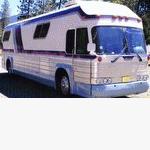 Rating: N/A |
What kind of range did they have with a full load of fuel? | ||
| Luvrbus (Luvrbus)
Registered Member Username: Luvrbus Post Number: 770 Registered: 8-2006 Posted From: 74.33.54.207 Rating: N/A |
Don, I was told by people in El Paso Tx it was 150 miles but that could just be El Paso | ||
| Buswarrior (Buswarrior)
Registered Member Username: Buswarrior Post Number: 1704 Registered: 12-2000 Posted From: 76.66.19.108  Rating: N/A |
They couldn't run as long in transit service as a GM New Look 6V71 with 100 gallons of diesel, or a 6V92 or 4 stroke S50 with 120 gallons in a Flyer/Orion/RTS. All the diesels could run 24 hours. CNG would run out of fuel during the night sometime, if it was mistakenly left out there. 24 hours, depending on the route, urban or suburban, could be anywhere 300 to 400 miles. happy coaching! buswarrior | ||
| Brian Elfert (Belfert)
Registered Member Username: Belfert Post Number: 82 Registered: 7-2006 Posted From: 75.72.107.232 Rating: N/A |
I worked at a fair that converted some OLD shuttle buses to CNG. These were gas engines, not diesel. Fuel mileage was horrendous. Each vehicle did maybe 100 miles a day at maybe 10 MPH average. We had to fuel at least twice a day and some days three times. The program was funded by natural gas suppliers who put advertising on the vehicles. They provided a huge portable fueling station, but it still took 10 or 15 minutes to fuel each vehicle. I think the only reaason Utah has such cheap CNG is due to subsidies. You're not likely to find much CNG on the road, at least not at public fueling stations. I did some research last year and I think there is only one CNG station in the Minneapolis metro area and it may not be public. | ||
| Arthur N. Gaudet (Runcutter)
Registered Member Username: Runcutter Post Number: 19 Registered: 9-2006 Posted From: 76.185.252.180 Rating: N/A |
Peter, many of my transit clients run CNG buses. The biggest problem, over the years, is fuel range. In fact, I'm doing a runcut right now for a client in the DC area. They are using 12 hours (at a high number of 13.5 MPH, that's about 160 miles)as the cutoff for fuel. They end up spending a lot in deadhead mileage (with a mileage-related variable cost, and some added labor cost). If they had diesels that could stay out 20-22 hours (depending on the city), those costs would be avoided. A client in California uses 16.5 hours (a little faster operation, let's call it 300 miles). When Dallas, TX went LNG, their range went down to 9-10 hours. Apparently, manufacturers and suppliers stretch the truth, the LNG buses were supposed to get the same range as the diesels they replaced. Also, hot climates = less actual fuel going in to reach tank pressure capacity. It's been reported tom me that fast-fill stations (i.e., public stations) somehow end up putting less actual fuel in (to get to 3400 lbs), than slow-fill stations. Some properties have finally increased tank capacity, the newer buses in the DC area (WMATA) has a roof full of tanks, and can finally approach the range of a diesel. I did some work in Laredo, TX a few years ago, they'd purchased some CNG buses. At the time, the next closest CNG fueling station was San Antonio. Around the same time, a (previous) General Manager in Las Cruces, NM had purchased a used CNG transit. You guessed it, there was no CNG fueling station in Las Cruces. I suspect that was one reason he was the former GM. So, with enough tankage, you could achieve range. With careful trip planning, you could navigate from public-accessible fueling station to fueling station. There may be more stations available now, but it still may limit where you can go. One other question.... will CNG fueling stations remain available within the life of your coach? One transit client in upstate New York had to convert a CNG vehicle back to diesel, when the only CNG fueling station in town shut down. With Ultra Low Sulphur Diesel, will this happen elsewhere? Arthur (Message edited by runcutter on September 17, 2009) | ||
| RJ Long (Rjlong)
Registered Member Username: Rjlong Post Number: 1605 Registered: 12-2000 Posted From: 67.182.53.218 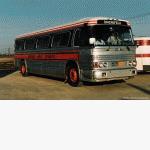 Rating: N/A |
Peter - Like Arthur and others have said, the CNG's have limited range. They also tend to be far more maintenance-intensive - you're lucky to get 5K - 6K on a set of (very $$) spark plugs, for example. Locally, our transit system runs approximately 6am til 11pm. While the diesel coaches are out on the route all day long, the CNG's are often swapped out at the end of the AM driver's shift, approximately eight hours after leaving the barn in the morning. Pretty pathetic - 8 hrs @ 12 mph average running speed = 96 miles. They might go back out onto the street for an afternoon rush tripper, but for the most part, it's back to it's parking stall in the yard. Around here, the nickname for a CNG bus is "Can Not Go" or "Crappy No Good". Now you know why they're cheaper and nobody wants them! FWIW & HTH. . .  | ||
| Arthur N. Gaudet (Runcutter)
Registered Member Username: Runcutter Post Number: 20 Registered: 9-2006 Posted From: 76.185.252.180 Rating: N/A |
One other element. Transit properties that have purchased CNG buses, have had to make major garage modifications. If I remember right, there was a garage explosion in southern California, so vents, heaters, devices, fire suppression, etc., etc. became manditory. That raises the question of where you could get the coach worked on (legally). Arthur | ||
| Cullen Newsom (Cullennewsom)
Registered Member Username: Cullennewsom Post Number: 133 Registered: 2-2009 Posted From: 98.200.242.221 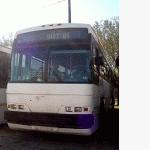 Rating: N/A |
Thoughts on a CNG bus? Yeah, I have a few. First thought is, I've got one that I'll sell you. Second thought is, it ain't cheaper without the many gov't subsidies, and a local glut of gas. ie Don't try this at home, unless home is Oklahoma, or somewhere like Oklahoma. Oh and you'll need lots of electricity to compress it. Did I mention that you can't drive it anywhere? Third thought is, no, you can't easily convert it to propane/trifuel, despite what you might have dreamed last night. Fourth thought? I wish I had used my powers of math. Then I'd have seen that it takes so much energy (in any form) to compress (or liquefy) the gas, that the gas needs to be priced somewhere around zero for it to be competitive with Diesel. Where can I buy a Mr. Fusion? Spark plugs? Yup, they are expensive, but you can clean them a few times. Don, Luvrbus is right, range is between 150 and 200 miles. It sometimes depends upon some things you can't control. Arthur, yeah, you need roof vents with CNG because it rises. Floor level vents with Propane because it is heavier than air. Pretty much common sense. Fire suppression systems? Yup Amerex false alarm generators/extinguishers come standard on most transits now. Did you know that dry chemical extinguisher corrodes metal if it isn't washed away? Where can you get it worked on? You're on your own mostly; and the state even tries to get in your business when you DIY it. Seriously, you want a CNG bus? Contact me, if I can't talk you out of it, I'll sell you mine. (Message edited by cullennewsom on September 18, 2009) | ||
| David Lower (Dave_l)
Registered Member Username: Dave_l Post Number: 217 Registered: 11-2007 Posted From: 67.58.201.132 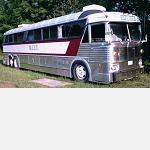 Rating: N/A |
Peter your first post on this thread somes it up! Cheaper buses because nobody want's them. Dave L | ||
| Peter River (Whitebus)
Registered Member Username: Whitebus Post Number: 143 Registered: 4-2009 Posted From: 204.62.64.30  Rating: N/A |
thanks for all the helpful advice, it's good to get actual experiences compared with anecdotal thoughts and brouchure information that are not exactly real world. | ||
| Tom Christman (Tchristman)
Registered Member Username: Tchristman Post Number: 125 Registered: 1-2006 Posted From: 66.218.33.156 Rating: N/A |
CNG is what most transits are using with their tanks mounted on the roof since CNG is lighter then air. It works well since they have enough to get them through an 8 hour day and then just refill at the yard. LNG (Liquified Natural Gas) is cooled to -210 degrees then put into double walled insulated stainless steel tanks that are much the same size as big rig fuel tanks. We have some running with the port using the Cummins ISL at 320hp w/ 1000lb/ft torque through an Allison 3000HS. They work well in regional use, not having to climb any hills. The tanks are 110gal which is about 55 gal of Diesel equivelent. At around 5mpg, that gives a safe usuable range of 240 miles. You could use the bigger 150gal tank that would give you about 75gal equivelent for a range of 375miles. Then run two of those tanks (they are 72" long and 26" in diameter) for a total range of 750miles before fillup. Then you could also run your dryer, range, furnace, refer, water heater on the natural gas too. Oh-did I mention the price of those LNG tanks? How about for the 110gal- $18,000.00 and the 150gal- $20,500.00. Now multiply that by two for $41,000.00 just for the tanks, then adding a fuel heat exchanger to warm the fuel with the price of the engine, and you'd be tickling the $100,000.00 mark to convert to LNG. Expensive to be green. Good Luck, TomC | ||
| Peter River (Whitebus)
Registered Member Username: Whitebus Post Number: 153 Registered: 4-2009 Posted From: 208.54.14.8  Rating: N/A |
can CNG bus be run on propane without much mechanical alteration? | ||
| Kyle Brandt (Kyle4501)
Registered Member Username: Kyle4501 Post Number: 515 Registered: 9-2004 Posted From: 65.23.106.193 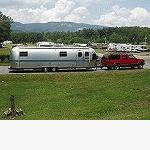 Rating: N/A |
Natural gas has ~1000 btu/cubic foot. Propane has ~2500 btu/ cubic foot. Other than the volume supplied to the engine (oriface) change, you'll need to check the pressures. . . . On another note, the archives are full of posts concerning how difficult it is to minimize the leaks on the compressed air systems on our buses & it's at less than 150 psi. Most power steering hydraulics run at ~1500psi. A small leak there can often be ignored since it only leaks when in use & the leak isn't espically flamable. Now you want to add CNG that has well over 3000 psi? That right there ought to tell you something as to what to expect from a cost of maintenance standpoint. Something else to consider; Propane has been done privately for cars & trucks & is often used on generators - yet diesel is still the preferred fuel choice. | ||
| Cullen Newsom (Cullennewsom)
Registered Member Username: Cullennewsom Post Number: 140 Registered: 2-2009 Posted From: 98.200.242.221  Rating: N/A |
You're all in luck! I happen to have one (150 gal) in my back yard. I was going to make it the last water-heater tank I ever had to buy. But, just because I like you guys, well, shall we start the bidding at half the normal price? I'll even throw in a heat exchanger or two.
On the Cummins C8.3 CNG fuel is electronically metered by mass flow. I suppose one might successfully fake out the metering system, I ended up with lots of backfiring and detonation on my first and second tries. But man did it go like hell! Westport will not discuss their firmware with you either. | ||
| FAST FRED (Fast_fred)
Registered Member Username: Fast_fred Post Number: 977 Registered: 10-2006 Posted From: 76.202.165.190 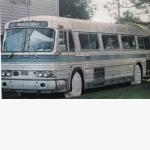 Rating: N/A |
Any one looking for a DD Ser.50 CNG transit takeout, you can have one for $600 US. No history , missing bellhousing , but otherwise complete.Arcadia FL. FF |